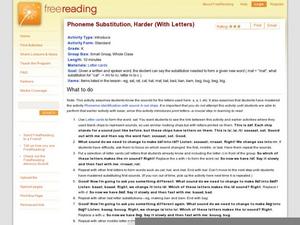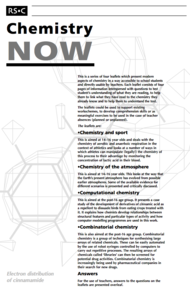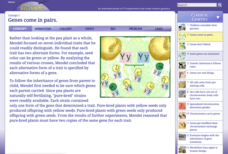Curated OER
Identify Base Words and Suffixes to Read Multisyllabic Words #1
Show your scholars how adding an affix changes the entire meaning of a word; they focus on the suffix -able. You'll find a complete script here, but if you don't want to read this verbatim, use it simply as an outline. Learners watch you...
Curated OER
Match the Rhymes
Which ones rhyme with swing? There are six images and scholars determine which ones rhyme. Two of the words are written out below to incorporate some printing practice as scholars trace the letters to form each single-syllable word....
Curated OER
Syllables
How many syllables? This practice activity starts with a brief introduction on segmenting words, encouraging kids to say words aloud. They categorize 12 words into lists based on number of syllables: one, two, or three. Next, scholars...
Curated OER
Blending Syllables Name Game
What a fun way to practice segmenting words into syllables! Engage learners by using their own names, spoken by Mico the puppet (or one of your favorites). Mico announces names slowly, syllable by syllable. If scholars have a...
Curated OER
Phoneme Substitution, Harder (With Letters)
Emergent readers create new words by changing a phoneme, using sets of letter cards to spell out each CVC word. They begin by substituting initial sounds, then final sounds, and lastly the middle vowel. Help them sound out each word,...
Perkins School for the Blind
The Germinator
How does a plant grow from a seed? Observe the process with a clever idea from the PBS television show ZOOM. Watch the video, then have your young botanists create their own germinators. The instructional activity described here is for...
EngageNY
Revising My Accessing Books Around the World Informative Paragraph for a Hook to Captivate My Reader
While this is considered optional within the unit it is designed for, pupils would benefit from the listed activities. Working on writing and revising a paragraph about librarians who travel to isolated areas, class members can add some...
ARKive
Seasons in the Woods
Winter in the cold Northwoods of Wisconsin can be hard on animals that aren't adapted to the climate. Investigate the animals that are out and about even in the coldest winter temperatures as you and your class examine animal...
Omaha Zoo
I Like to Move It
What do lemurs do best? They move! Lemurs like to jump, run, hop, and climb and it's your class's job to document seven fun lemur behaviors. The class starts by discussing why lemurs are considered primates, and then they isolate seven...
Wikipedia
Map of World War II Japanese American Internment Camps
Your learners may be surprised to view the extensive number of Japanese American Internment Camps that existed in the United States during World War II. This map details the area along the Pacific Coast from which people of Japanese...
Curated OER
Transforming Formulas
Solving for x is a classic algebra scenario. Now, solve for x when the other terms in the equation are variables. Isolate the correct variable and practice writing the equation first before solving.
Global Oneness Project
Flamenco: A Cross-Cultural Art Form
Notes of pride and persecution, exclusion and isolation resonate in flamenco. Introduce this musical art form to your social studies or Spanish language classes with a resource that follows a young flamenco guitarist as he practices his...
WindWise Education
Which Blades Are Best?
If I change the length, will they work better? After brainstorming the variables of wind turbine blade design, groups choose one variable to isolate and test. The groups then present their data to the class in order for all to have the...
Curated OER
Weather and Climate
It's hot today, but is that the weather or the climate? This colorful presentation isolates both concepts to allow for better understanding by covering the positioning of the planet, making comparisons of land versus water, and looking...
Virginia Department of Education
Balanced
Bring balance to your lesson plans with an activity that asks individuals to solve one-step linear equations with inverse operations. Balance scales help learners understand the concept of isolating the variable.
Royal Society of Chemistry
Computational Chemistry—Chemistry Now
Can some plants make their own animal repellents? Science sleuths examine the properties of cinnamamide in pear trees using an case study about computational chemistry. The resource discusses how vital computers are to research, how...
Centers for Disease Control and Prevention
What Parents Need to Know About Marijuana Use and Teens
The teenage years find adolescents yearning for independence—and often isolating their parents from their everyday lives. Educate parents on the warning signs of marijuana use, including its effects on the brain and the likelihood of...
Kenan Fellows
Determining the Atomic Mass of Elements in a Compound Using Matrices
Scholars apply concepts learned in both Algebra II and Chemistry to answer the questions on the provided worksheet. The activity allows for extra practice in both classes and helps connect concepts usually taught in isolation. The...
Howard Hughes Medical Institute
Great Transitions Interactive
How did life evolve from fish to four-limbed animals? Work through an interactive exploring transition animals and comparing their features to understand the transition. Making it even better, the interactive allows scholars to isolate...
Meadows Center for Preventing Educational Risk, University of Texas at Austin
Lesson 5 - R-Controlled Syllables
Put on your pirate hat and get ready to teach r-controlled syllables. Learners practice using words that contain ar, or, er, ir, and ur. Instructors model how to decode words to isolate vowel teams, as well as combine r-controlled sounds...
Cold Spring Harbor Laboratory
Genes Come in Pairs
Mendel was the first to look at individual traits within a species. Step in his shoes as an interactive lesson takes users through his journey. An animation describes the design of his experiments and how he isolated individual traits to...
US National Archives
WWII: The Atlantic 1939-45 – Battle of the Atlantic
The most dangerous line of attack during World War II wasn't the German planes soaring above Britain, but the U-Boats cutting off their supplies of food and equipment. Learners research the Battle of the Atlantic, the German campaign to...
American Chemical Society
Condensation Station
Where does the water come from? Pupils conduct an experiment to learn more about condensation. Scholars fill two cups with ice water and isolate one from the surrounding air. They then use a coffee filter to compare the amount of water...
Amani Project
Write a CoronaKindness Song
And the beat goes on! Finding a way to connect during the isolation imposed by the Coronavirus pandemic can be challenging. This activity from the Amani Project offers a way to stay close during a time of physical distancing....
Other popular searches
- Isolationism
- Wwii American Isolationism
- Phoneme Isolation
- American Isolationism
- Us Isolationism
- 1920's Isolationism
- Bacterial Isolation
- Japanese Isolationism
- Isolationism Japan
- United States Isolationism
- Isolationism of Japan
- Geographic Isolation

























